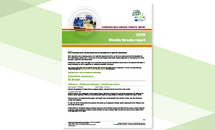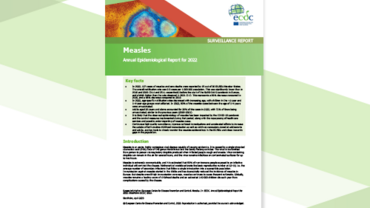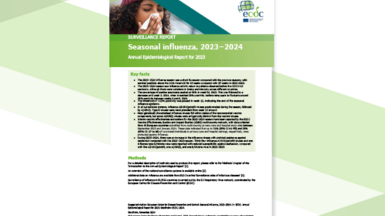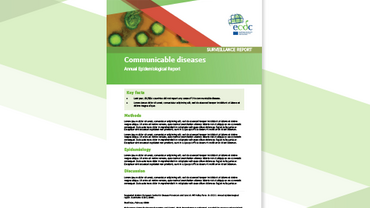Communicable disease threat report 21 December 2012, week 51
The ECDC communicable disease threats report is a weekly bulletin intended for epidemiologists and health professionals in the area of communicable disease prevention and control. Summarising information gathered by ECDC through its epidemic intelligence activities regarding communicable disease threats of concern to the European Union, it also provides updates on the global situation and changes in the epidemiology of communicable diseases with potential to affect Europe, including diseases that are the focus of eradication efforts
Executive Summary
From 16 to 22 December 2012, ECDC monitored several ongoing public health threats within and outside the European Union.
As of 16 December 2012, a total of 2 103 cases of dengue fever have been reported from Madeira. Between 10 and 16 December, 53 new cases were reported, representing a 7% decrease on the previous week. As of 20 December, 72 cases of dengue have been reported among European travellers returning from Madeira since the start of the outbreak.
The communicable disease threats report (CDTR) for week 51 also includes information about influenza. During week 50/2012, all 23 countries reporting experienced low-intensity of influenza-like-illness or acute respiratory infection activities. However, sporadic geographic spread was reported by fourteen countries and the UK (Northern Ireland), and increasing trends were reported by nine countries.
On 19 December 2012, UK authorities notified that a further person who injected heroin was diagnosed with anthrax infection and has died in Medway, England. The conclusions of the rapid risk assessment published by ECDC and EMCDDA in February 2010 and updated on 13 July 2012 remain valid. The risk of exposure to contaminated heroin for people who inject drugs remains present, and accidental contamination is the most plausible explanation. The reports of cases of anthrax in people who inject drugs in several countries over a long time period suggest that contaminated heroin is still circulating in Europe. The geographical distribution of the contaminated heroin is unknown at this time, but it is possible it has the same source as the contaminated heroin incriminated in the previous outbreaks.
Download








